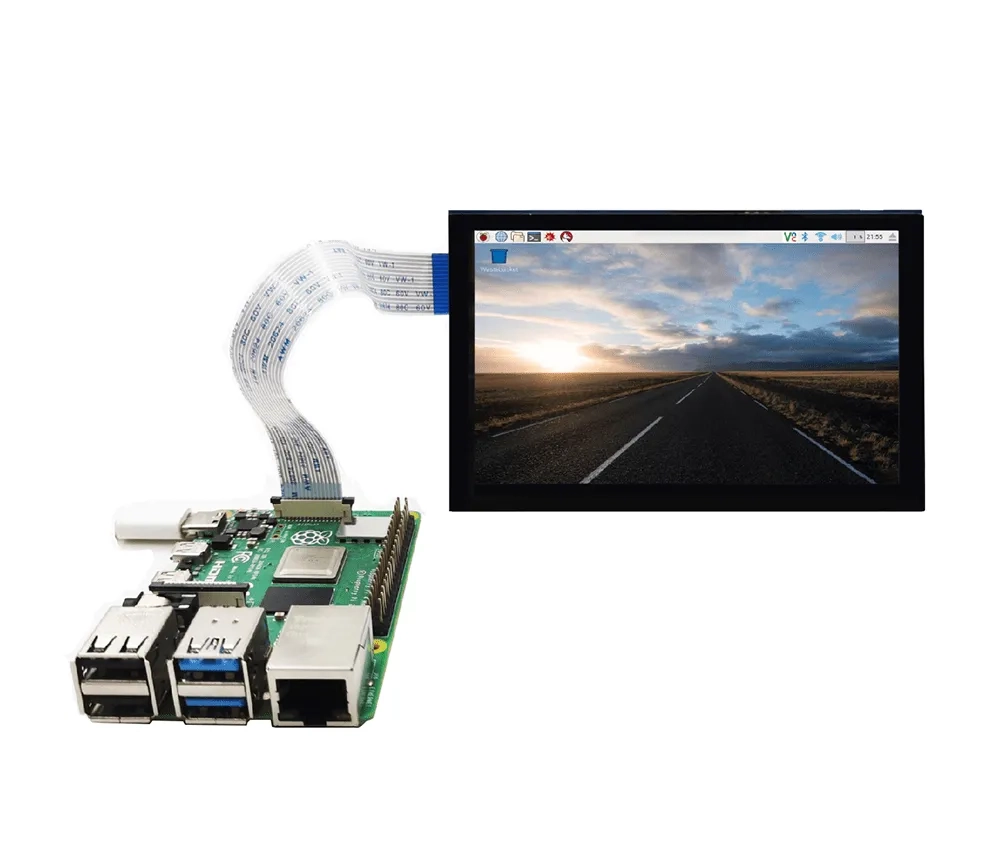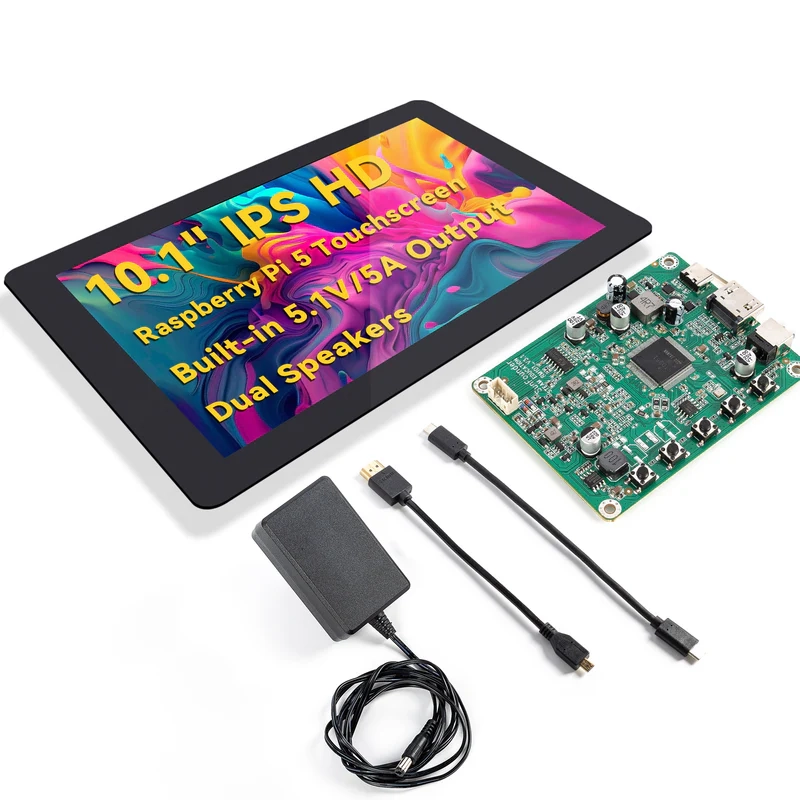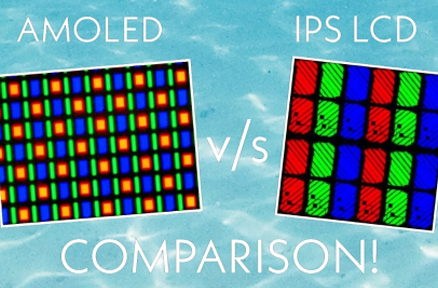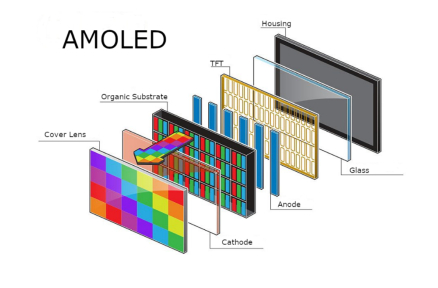In systems powered by Raspberry Pi, picking the right display interface matters a lot for good performance, especially in touch control setups for industrial and medical uses. The DSI MIPI Display for Raspberry Pi gives a fast, small-sized option perfect for tight designs. Meanwhile, HDMI offers a flexible, widely used standard.
This guide breaks down the technical differences between DSI MIPI and HDMI. It focuses on how they affect touch control speed, delays, and ease of use in projects. Engineers and designers choosing a Display for Raspberry Pi need to think about power use, customization choices, and quick responses to meet project needs.
What Defines DSI MIPI Display for Raspberry Pi in Embedded Systems?

The MIPI Display Serial Interface (DSI), created by the MIPI Alliance, is built for high-quality embedded displays. For Raspberry Pi, the DSI MIPI Display for Raspberry Pi links directly to the GPU through a serial setup. It uses differential signaling with one clock lane and up to four data lanes. This allows high-speed video transfer, supporting resolutions up to 4K. However, Raspberry Pi hardware often limits output to Full HD or 1440p because of processing power.
How Does DSI MIPI Display for Raspberry Pi Operate?
DSI MIPI works in two ways: command mode for low-energy, still updates like control panels, and video mode for steady pixel streaming, such as dynamic visuals. Setting it up needs careful tweaks in the Raspberry Pi OS kernel’s device tree overlays to set panel timings, resolution, and driver settings. Wrong setups can cause display issues, so checking datasheets is key.
Why Is DSI MIPI Display for Raspberry Pi Compact?
With just 15-20 pins, DSI MIPI keeps wiring simple, perfect for slim cases in automation kiosks or portable medical tools. It uses 1-2W for 5-7 inch screens, much less than HDMI, making it great for battery-powered devices. But, not all panels work natively with Raspberry Pi’s DSI port, and some need bridge chips.
Why Choose HDMI Display for Raspberry Pi for Versatility?

HDMI, or High-Definition Multimedia Interface, is a common digital standard for sending audio and video. It supports resolutions from 480p to 8K and refresh rates up to 120Hz. On Raspberry Pi, HDMI ports (micro or full-size) use TMDS signaling for easy, plug-and-play connections. They automatically adjust display settings via EDID.
How Does HDMI Display for Raspberry Pi Simplify Integration?
HDMI’s hot-swap feature means no need for kernel changes, making prototyping fast. It handles multi-stream audio and CEC for syncing devices, great for multi-display setups in industrial control rooms. Its bandwidth hits 18Gbps (HDMI 2.0), but Raspberry Pi 4 and 5 top out at 4K@60Hz due to GPU limits.
What Are HDMI Display for Raspberry Pi Limitations?
HDMI uses more power, around 3-5W for 1080p screens, and long cables (up to 15m) can weaken signals, needing active adapters. Touch control depends on separate USB or I2C channels, which add delays compared to DSI MIPI’s built-in approach.
How Do DSI MIPI and HDMI Displays for Raspberry Pi Compare Technically?
Comparing DSI MIPI and HDMI shows clear strengths for embedded uses. Key factors include delay times, energy use, and setup difficulty, all affecting touch control performance.
What Impacts Latency in Displays for Raspberry Pi?
DSI MIPI keeps delays under 10ms in video mode thanks to its direct connection, perfect for real-time tasks like surgical simulators. HDMI, with 20-50ms delays, struggles due to protocol overhead and cable issues, slowing down dynamic interfaces.
How Does Power Efficiency Vary in Displays for Raspberry Pi?
DSI MIPI’s low-power signaling drops to microamps when idle, using 1-2W. HDMI’s constant 3.3V draw uses 3-5W. This makes DSI MIPI better for energy-tight projects.
What Are Bandwidth and Integration Differences in Displays for Raspberry Pi?
DSI MIPI reaches 24Gbps with four lanes, topping HDMI 2.0’s 18Gbps but with finer control. Its small FPC connectors fit tight spaces, while HDMI’s larger ports add 10-20% to case size. DSI MIPI needs complex kernel setups, unlike HDMI’s simple plug-and-play.
| Metric | DSI MIPI Display for Raspberry Pi | HDMI Display for Raspberry Pi |
|---|---|---|
| Latency (ms) | <10 | 20-50 |
| Power Consumption (W) | 1-2 | 3-5 |
| Bandwidth (Gbps) | Up to 24 (4 lanes) | 18 (2.0 spec) |
| Contaggio Pin | 15-20 | 19 (full connector) |
| Supporto risoluzione | Up to 4K (Pi-limited) | Up to 8K |
| Integration Complexity | High (kernel config) | Low (plug-and-play) |
How Does Touch Control Perform with Displays for Raspberry Pi?
Touch control turns simple displays into interactive tools, vital for Raspberry Pi uses in monitoring or medical diagnostics. Capacitive touch layers are common, offering 5-10 touch points with super-fast responses.
What Enhances DSI MIPI Display for Raspberry Pi Touch Integration?
DSI MIPI blends touch via I2C or SPI over the same FPC ribbon, hitting 5-15ms gesture processing times. This cuts jitter for tasks like marking medical scans. Raspberry Pi OS uses libinput for palm rejection and edge filtering, improving use with gloves. Optical bonding reduces parallax errors, lifting accuracy to over 95%.
How Does HDMI Display for Raspberry Pi Handle Touch?
HDMI touch setups use separate USB or I2C controllers, causing 10-30ms delays, worse in multi-user cases. Software buffering for video-touch sync can lag by 1-2 frames. Resistive touch, less common, struggles in wet conditions, a problem in medical settings.
What Are Touch Accuracy Metrics for Displays for Raspberry Pi?
Per ISO 9241, DSI MIPI hits 98% accuracy at 2mm targets, compared to HDMI’s 92%, thanks to its direct signal paths. DSI MIPI saves 20-30% energy during idle touch polling, boosting uptime.
Where Do Displays for Raspberry Pi Fit in Industrial and Medical Applications?
Industrial and medical settings need special display features, where DSI MIPI and HDMI meet different needs.
Why Use DSI MIPI Display for Raspberry Pi in Industrial HMIs?
DSI MIPI’s low EMI and small connectors work well for CNC controls or robotic vision, meeting EMC Directive 2014/30/EU. Wide-temperature models (-30°C to 85°C) handle tough environments.
How Does HDMI Display for Raspberry Pi Support Multi-Display Setups?
HDMI shines in big dashboards, but cable management limits scaling in industrial control rooms.
What Makes DSI MIPI Display for Raspberry Pi Ideal for Medical Imaging?
DSI MIPI’s IPS panels, with 1000:1 contrast and 10-bit color depth, support DICOM-calibrated grayscale for diagnostics. Antimicrobial coatings meet ISO 13485, cutting contamination risks compared to HDMI’s external controllers.
Which Display for Raspberry Pi Best Suits Embedded Touch Systems?
DSI MIPI Display for Raspberry Pi stands out for low-delay, energy-saving, small designs, perfect for touch-focused systems. HDMI focuses on compatibility for wider setups. Choosing depends on project needs like size and compatibility.
Domande frequenti
What distinguishes DSI MIPI Display for Raspberry Pi from HDMI in configurations?
DSI MIPI uses a serial, low-pin setup for direct GPU-to-panel links, focusing on efficiency. HDMI uses a parallel TMDS standard for universal video-audio delivery.
How does touch latency vary between DSI MIPI and HDMI Displays for Raspberry Pi?
DSI MIPI achieves 5-15ms delays with integrated I2C/SPI touch buses. HDMI hits 10-30ms via separate USB channels, affecting real-time response.
Can DSI MIPI Display for Raspberry Pi support medical-grade imaging standards?
Yes, its IPS panels offer DICOM compliance and high contrast, enabling clear grayscale for diagnostics.
What customization options enhance DSI MIPI Display for Raspberry Pi for industrial use?
Options like optical bonding for anti-glare, wide-temperature operation, and custom FPCs improve durability in automation.
Is kernel configuration mandatory for DSI MIPI Display for Raspberry Pi?
Yes, device tree overlays must set timings and drivers to work, unlike HDMI’s auto-detection.
Partner with Kadi Display: Elevate Your Embedded Projects Today
Display Kadi, a Shenzhen-based top manufacturer in industrial and medical displays, provides custom DSI MIPI Display for Raspberry Pi modules with over 20 years of expertise. Kadi Display runs a 10,000㎡ facility, handling 100+ custom projects yearly and serving 2,000+ clients. Specializing in TFT-LCD and OLED, Kadi offers DSI MIPI panels like the 5.0-inch 800×480 model, with capacitive touch, up to 2500 nits brightness, and interfaces including HDMI/DSI hybrids. Customization includes pinout tweaks, optical bonding, and wide-temperature variants (-30°C to 85°C) for tough setups.
Technical support covers project lifecycles, from kernel driver integration to AOI-inspected quality checks. For partnerships, contact sales@sz-kadi.com or +86-13662585086 for quotes, samples, or custom Raspberry Pi solutions.
Blog & Notizie correlate
-
TN contro IPS2024-7-9
-
TN contro IPS2024-7-9









